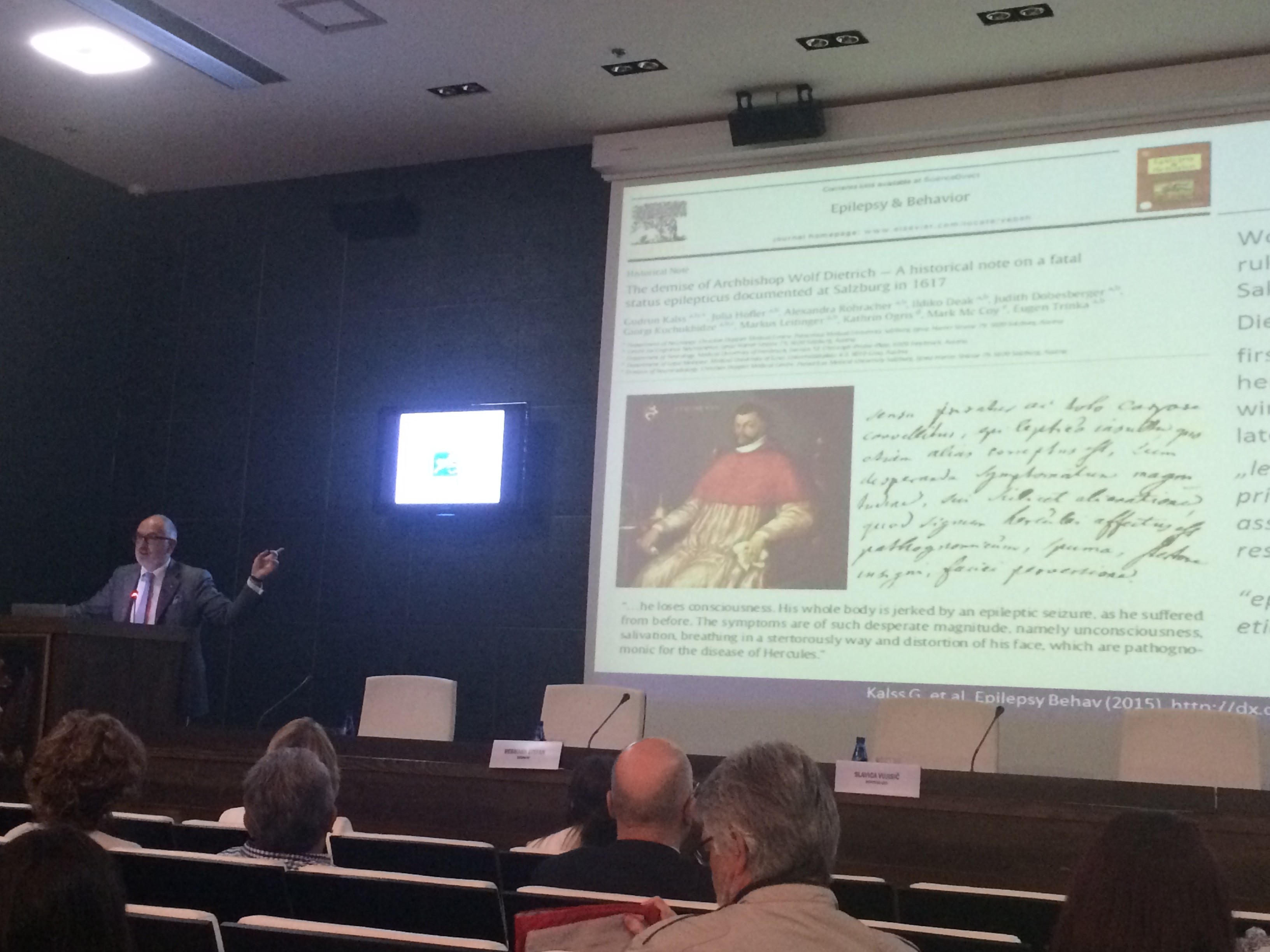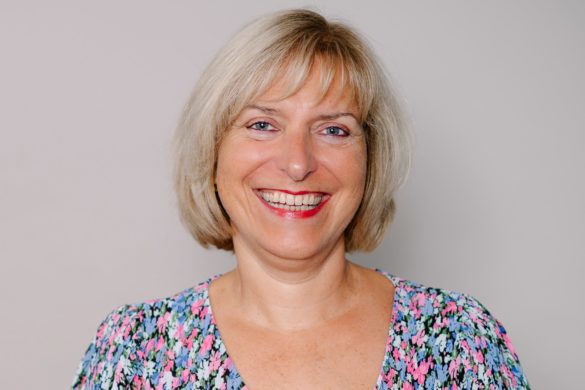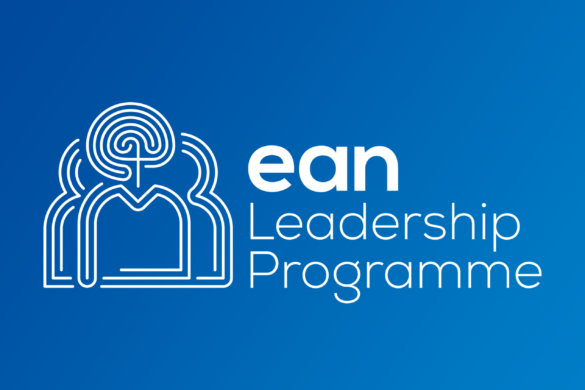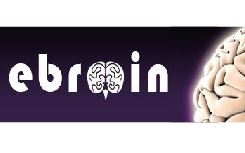by Slavica Vujisic and Sanja Vodopic
The Regional Teaching Course of the European Academy of Neurology took place on October 9th -11th, 2015 in Budva, Montenegro. It was the first time the regional teaching course was organised in our country.
On the first day, the opening ceremony started at 9 a.m. and was presided by Sanja Vodopic, MD. Greetings from the chair of teaching course sub-comittee of European Academy of Neurology, Prof. Theodor Landis, the chair of the Montenegrin Neurological association, Prof. Slavica Vujisic and from the vice president of the Montenegrin minister of health, Zoran Kostic, were addressed. All speakers and participants enjoyed a short national dance performance after the greetings.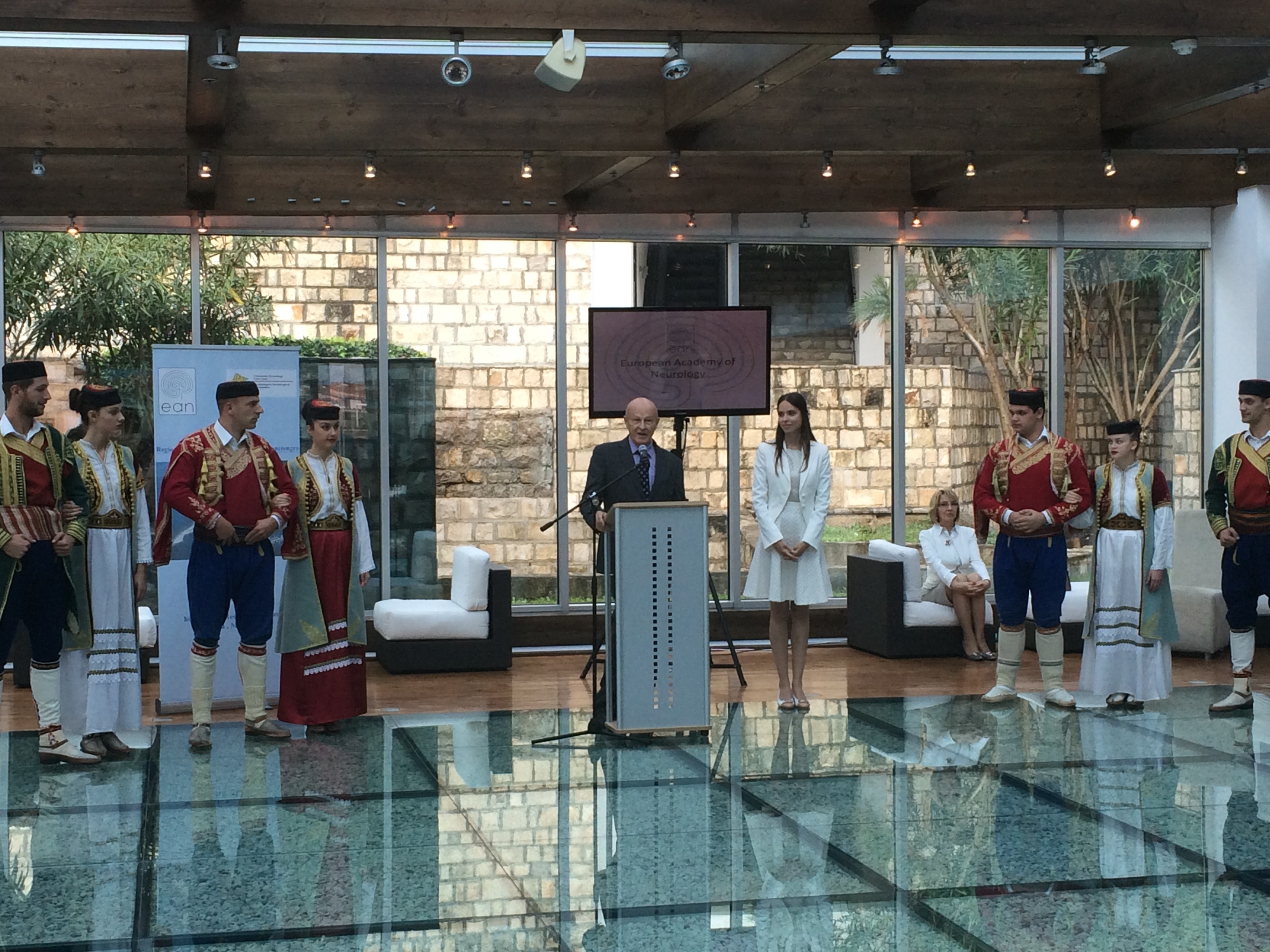
First of all we would like to thank the EAN Head Office, Julia Mayer, the EAN Education vommittee, especially Professor Theodor Landis, and all our invited speakers for their support in organising the Regional Teaching Course. We are also very thankful to all of them for their wonderful and inspiring lectures. Eleven <professors from Austria, Germany, the Netherlands, Belgium, France, Switzerland, United Kingdom, Slovenia, Serbia and Montenegro composed the faculty. We believe that the meeting was stimulating, productive and it contributed to a better understanding of the neurological diseases.
The lectures on the first day were focused on epilepsy.
Prof. Eugen Trinka (Austria) gave a lecture on the status epilepticus. He focused on the definition, the duration of the status in regard to the seizure type, prediction of the definite brain damage and adequate time for the treatment. Professor Trinka also presented convulsive status epilepticus treatment protocol according to the following stages: early, established and refractory status epilepticus.
Prof. Hermann Stefan (Germany) talked about the diagnosis and treatment of epilepsy in the elderly. He emphasised the fact that non-neurologists often misdiagnose epilepsy among older population. Further, Prof. Stefan highlighted the criteria for differential diagnosis between epilepsy and transitory ischaemic attack (TIA). He also explained the differences in the semiology of seizures in younger compared to seniors.
Dr Roland Thijs (Netherlands) presented a lecture on sudden unexpected death in epilepsy (SUDEP), current classification, the incidence and risk factors like frequent tonic-clonic seizures, longer duration of epilepsy, nocturnal seizures, male sex, polytherapy and lamotrigine use in women with idiopathic generalized epilepsy. Dr Thijs underlined that the best prevention of SUDEP is good seizure control.
Prof. Slavica Vujisic (Montenegro) spoke about the complexity of the treatment of women with epilepsy, side effects of antiepileptic drugs on the external appearance, contraception, problem with fertility and the specific treatment of epilepsy in pregnancy and menopause. Further, Prof. Vujisic talked about the impact of epilepsy and antiepileptic drugs on pregnancy, hormonal changes and fetal malformations.
The last speaker on the first day was Antonella Macerollo, MD, an office manager for the residents and research fellows, who talked about future perspectives for junior neurologists in Europe.
In the afternoon, an interactive workshop was organised. Prof. Trinka moderated a session on antiepileptic therapy. Prof. Stefan discussed ictal semiology including videos of certain types of seizures. Dr Thjis presented differental diagnosis of non epileptic versus epileptic event. In every respect, the discussions were outstanding.
On the second day of the course, the lectures were dedicated to field of the peripheral neuron disease.
Prof. Peter van den Bergh (Belgium) delivered a lecture on inflammatory neuropathies, diagnostic criteria for certain types of inflammatory neuropathies and the consequences of demyelination. Prof. Bergh mainly focused his lecture on clinical aspects, therapeutical approaches and differential diagnosis of acute inflammatory demyelinating polyradiculoneuropathy (Guillain-Barré syndrome – GBS), acute motor axonal neuropathy (AMAN) and acute motor and sensory axonal neuropathy (AMSAN). Other inflammatory neuropathies like chronic inflammatory demyelinating polyradiculoneuropathy (CIDP) and paraproteinemic neuropathies were reviewed as well.
Prof. Jean-Michel Vallat (France) presented a lecture on Charcot-Marie-Tooth disease as a representative of hereditary neuropathy. Prof. Vallat commented on some new proposals for the classification. He talked about the most frequent form of inherited neuropathy, a genetically heterogeneous group of disorders of the peripheral nervous system but with a quite homogeneous clinical phenotype. Prof. Vallat also discussed the diagnostic approaches and the underlying molecular pathogenesis of Charcot-Marie-Tooth disease.
Prof. David Vodušek (Slovenia) talked about autonomic neuropathies that are involved in a wide spectrum of syndromes and diseases both hereditary and acquired. Prof. Vodušek named several infrequent genetic disorders which are presented with autonomic dysfunction. Futhermore, he highlighted that acquired autonomic neuropathies, which are more prevalent than the inherited ones, have been classified into primary (or idiopathic) and secondary. Profesor Vodušek explained the new approaches to etiologic classification of acquired autonomic neuropathies that stress the known or presumed pathopysiological process.
Prof. Slobodan Apostolski (Serbia) gave a lecture on multifocal motor neuropathy (MMN). It is a well-defined chronic, slowly progressive immune-mediated neuropathy, characterised by progressive, predominantly distal, asymmetric limb weakness mostly affecting upper limbs, with minimal or no sensory impairment, and by the presence of multifocal persistent partial conduction blocks on motor but not sensory nerves. Prof. Apostolski highlighted the importance of distinguishing MMN from motor neuron disease because it is a treatable disorder with a favourable prognosis.
In the afternoon, all the lecturers from the morning session were the moderators for the workshop – Prof. Peter van den Bergh for the peripheral neuron disease, Prof. Jean Mishelvalat for Amiotrophic lateral sclerosis, Prof. David Vodušek for neuropatic pain and Prof. Slobodan Apostolski for Myasthenia gravis. Moderators as well as participants enjoyed a very active discussion.
On the third day the lectures were focused on different topics.
Prof. Kailash Bhatia (UK) gave a lecture on clinical approach to Parkinson’s disease (PD). He talked about the features, diagnosis, and principles of management. He emphasised that accurate diagnosis is critical and remains founded on clinical grounds as no specific diagnostic test is available so far. Prof. Bathia dicussed in detail diferential diagnosis of PD towards vascular parkinsonism, drug-induced parkinsonism, essential tremor, dementia with Lewy bodies, multiple system atrophy and progressive supranuclear palsy. He also briefly discussed therapeutic issues of PD.
Prof. Theodor Landis (Switzerland) je talked about mental status in neurology. Prof. Landis stated that neurological opinion is basically topographical and pointed out that small lesions at “crucial” sites might be much more symptomatic than large lesions at less “crucial”. Prof. Landis gave a presentation with the goal to detect “normality” of mental systems in a short time. He demonstrated the Maxi-mental test that was presented to the Swiss Neurological Society for the first time in 1982, and has been modified over the years.
An excellent talk about the differential diagnosis of oculomotor syndromes with video slides was held by Prof. Detlef Kömpf (Germany). In order to understand eye movement disorders, Prof. Kömpf pointed out the necessity of good knowledge of anatomical structures, tracts and their connections responsible for eye movements.
Dr Sanja Vodopić (Montenegro) delivered a lecture on the risk factors in multiple sclerosis (MS) instead of Dr Ljiljane Radulović, who was absent due to justified reasons. The latest data from the studies in the areas of immunology, epidemiology, genetics and infectology were delivered and explained. During the speech, Dr Vodopic specially underlined smoking, vitamine D deficiency, previous viral infections and heritage as risk factors in the occurance of MS.
At the end of the lectures, participants took a test. All participants received participation certificates and the ones who passed the test were also issued a second certificate for succesfully taken exam.
There were also social activites including a tour to Cetinje, the old Montenegrin capital and a visit of the King Nikola’s Petrovic museum as well as gala dinner that offered participants the opportunity to get to know each other in a more friendly atmosphere.
The Regional Teaching Course had participants from all parts of Montenegro and other countries: Italy, Russia, Belarus, Ukraine, Slovenia, Serbia, Bosnia and Herzegovina, Romania, Macedonia, Albania and Kosovo. More than 60 doctors participated in the RTC in Budva.

